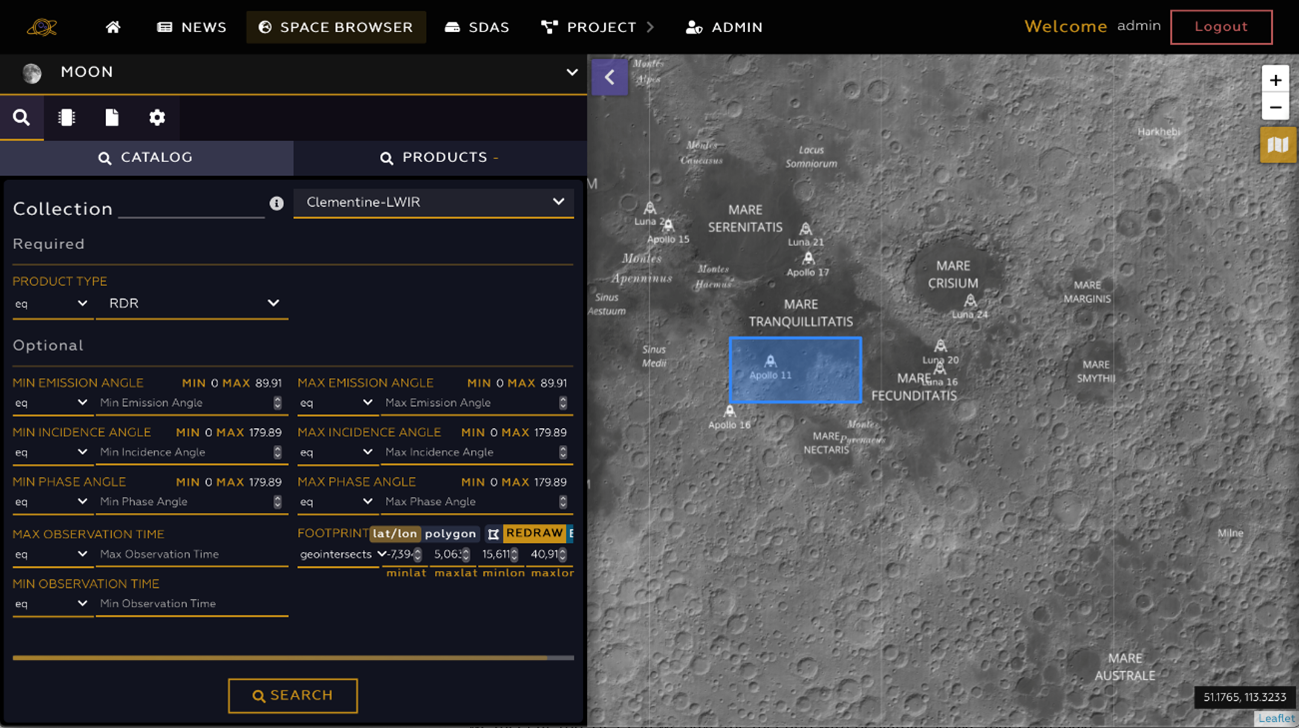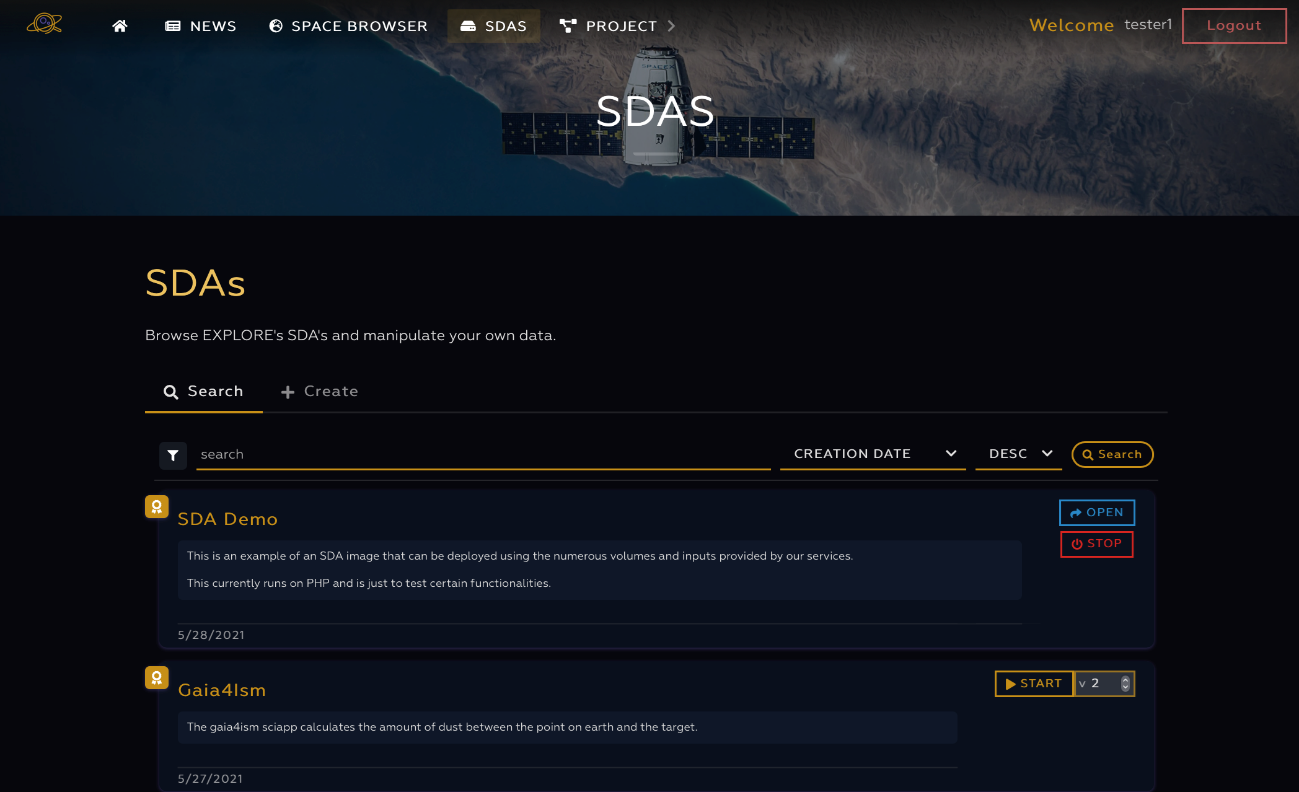EXPLORE - Innovative Scientific Data Exploration and Exploitation Applications for (Planetary) Space Sciences
- 1ACRI-ST, Centre d’Etudes et de Recherche de Grasse, 10 Av. Nicolas Copernic, 06130 Grasse, France (nick.cox@acri-st.fr)
- 2Jacobs University Bremen
- 3Tel-Aviv University, Tel-Aviv, Israel
- 4Observatoire Cote d'Azur, Nice, France
- 5The University of Manchester, Manchtester, United Kingdom
- 6Know-Center, Graz, Austria
- 7Dill-Faulkes Educational Trust, United Kingdom
- 88adwäisEO, Luxembourg
- 9Open University, Milton Keynes, United Kingdom
Introduction
In this contribution we present the EXPLORE Horizon 2020 Research & Innovation project and the new tools and services it is providing to promote scientific exploitation of planetary and astrophysical data. EXPLORE's main objective is to develop and deploy a suite of scientific data applications (SDAs, aka Apps) for Lunar exploration and Gaia. EXPLORE is placed in a broader landscape of open science platforms and initiatives such as the European Open Science Cloud [1]. Our ambition is to support and accelerate space science exploration and exploitation with open data and open science.
EXPLORE platform
To support the development, testing, and demonstration of the SDAs we set-up a virtual platform, https://explore-platform.eu which, in addition to running SDAs for users, also has a space browser to easily find data from selected planetary missions (see Figures below). The final goal is to deploy the SDAs, under open-source licences, on different cloud science platforms where and when possible (e.g. ESA Datalabs [2] and ESCAPE Science Analysis Platform [3]) to stimulate uptake and sustainability of both SDAs and these platforms. The EXPLORE platform could also be used, as a bespoke (application agnostic) service, by research groups / institutions.


Scientific Data Applications
Within EXPLORE six scientific data applications (SDAs) produce new scientific data products and offer new scientific services. Two applications integrate data from a range of lunar missions to focus on characterisation of the Moon’s surface and potential human landing sites. The other four applications leverage data primarily from Gaia, developing tools to study the evolution of our galaxy (stellar archaeology), interstellar dust clouds, and support the discovery, classification, and characterisation of stars. The SDAs utilise state-of-the-art machine learning and visual analytics to further enhance scientific return and discovery potential of space science missions.
Our SDAs (Apps)
The six (initial) SDAs, from Lunar, stellar to Galactic science are summarised as follows (proto-types on https://explore-platform.eu):
- L-Explo is a service that aims to be complementary to existing initiatives such as Moon Trek [4], QuickMap [5], and Orbital Data Explorer [6]. We focused it on supporting large scale lunar mapping in a 2/2.5D environment. The backend access and queries the ingested higher-level lunar data through WMS standards and custom processing APIs.
- L-Hex focusses on the smaller scale Lunar features that are of interest to local, (human and robotic) exploration, with visualisations extending to 3D. Backend is common to L-Explo. See also [9].
- S-Phot reconstructs stellar spectral energy distributions (SEDs) by collating archival photometric surveys, from UV to infrared, including the Gaia (e)DR3 to derive accurate stellar properties for a wide range of applications such as finding stars with blue or red excess, studying stellar clusters, characterising exoplanet host stars, etc.
- S-Disco brings a new dimension to exploring large spectroscopic, photometric, and astrometric data sets and particularly to the discovery of unusual, anomalous objects, and finding similar objects, through providing new representations and visualisations of higher dimensionality data with machine learning.
- G-Tomo is an application that serves a set of public 3D tomography cubes with different extents / spatial resolutions [7]. It allows to create different visualisations (currently 1D profiles, 2D slices and 3D volume contours) of the galactic interstellar dust cloud distribution (up to 10 kpc extent).
- G-Arch is a sophisticated tool to infer stellar parameters and abundances (Teff, logg, [alpha/H], [Fe/H], etc) from stellar spectra (based on the Matisse software [8]) and providing a suite of visualisations and machine learning analysis functionalities.
Concluding statement
EXPLORE’s ambition is to support and accelerate space science exploration and exploitation with open data and open science. The lunar SDAs are timely in light of the 50th year celebration of the last humans to set foot on the Moon (11 December 2022) and the global renewed interest to visit our celestial sister. The “Gaia” SDAs are also timely with the Gaia DR3 release and the additional data it brings over the earlier eDR3.
Acknowledgments
This project has received funding from the European Union’s Horizon 2020 research and innovation programme under grant agreement No 101004214.
References
[1] Pasian et al. (2020), What can Open Clouds do for Astronomy? Interaction between the ASTERICS and EOSC Projects, ADASS XXVII, 522, 707
[2] Arviset et al. (2021), ESA Datalabs: Towards a collaborative e-science platform for ESA, LPI Contributions, 2549, 7014.
[3] Allen et al. (2020), ESCAPE – addressing Open Science challenges, arXiv:2012.11534
[4] Law et al. (2021), Feature detector on the Moon Trek Portal, EPSC2021-151, doi:10.5194/epsc2021-151
[5] QuickMap help, https://docs.quickmap.io
[6] Wang et al. (2021), Planetary data search with PDS geosciences node’s Orbital Data Explorer, LPI Contributions, 2549, 7025
[7] Lallement et al. (2022), Updated Gaia-2MASS 3D maps of Galactic interstellar dust, arXiv:2203.01627
[8] Recio-Blanco et al. (2006), Automated derivation of stellar atmospheric parameters and chemical abundances: the MATISSE algorithm, MNRAS, 370, 141
[9] Cox et al. (2022), EXPLORE – Innovative Scientific Data Exploration and Exploitation Applications for Space Sciences – The lunar case, 6th Planetary Science Informatics and Data Analytics Conference 2022.
How to cite: Cox, N., Rossi, A. P., Nodjoumi, G., Poznanski, D., Eilat-Bloch, Y., Recio-Blanco, A., Zijlstra, A., McDonald, I., Rauch, M., Sabol, V., Heward, A., Corrato, G., Genot, A., Bernard-Salas, J., and Mangin, A.: EXPLORE - Innovative Scientific Data Exploration and Exploitation Applications for (Planetary) Space Sciences , Europlanet Science Congress 2022, Granada, Spain, 18–23 Sep 2022, EPSC2022-507, https://doi.org/10.5194/epsc2022-507, 2022.

